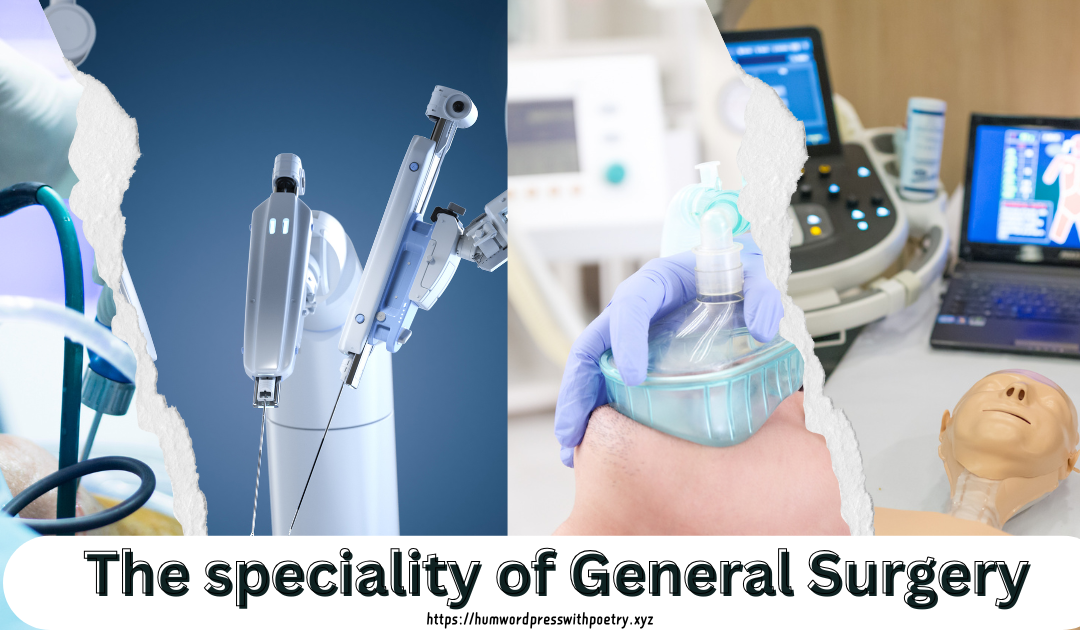In“The speciality of General Surgery”The field of General Surgery has come a long way over the past three or four decades, for example. Urged by spectacular technology, better knowledge of the human body, and change in focus on the patient these innovations have revolutionized surgical processes. Not only are they improving the quality of patients’ outcomes but they are also reducing the time taken for recovery and increasing the accuracy of undertaking treatment procedures.
Nonetheless, in this article, the author will undertake discussion of some of these effective innovations in General Surgery today that are changing the world. From robotic assisted operations to key-hole surgeries: A glance at changes that are improving the operations. MIS is one of the new techniques of operation that is quite distinct from traditional practices that require wide opening of the surgical site and frequent use of forces and tweezers to restrain and manipulate the tissues in that region.
Peripheral minimally invasive surgery has the following benefits:
Reduced Trauma: This is because smaller incisions will therefore mean that there is little or no harm done to the tissues that are surrounding the area where the incisions are made as this will result in less pains after the operation is conducted.
Faster Recovery: MIS is usually characterized by shorter hospital stays and faster rates of patient recovery out of the hospital.
Lower Infection Rates: Reducing the size of the incisions has the advantage of reducing infection rate, which goes a long way in bringing the desired results in patients.
Enhanced Precision: Fine details in operations are made possible by the means of improved imaging techniques and improved instruments.One area that has gained importance in the recent past is the conservative methods used in operations such as cholecystectomy, hernioplasty and appendectomy, which have soundly adopted minimal invasive approaches to surgery.
Robotic surgery: the progression and increase:
Similar to that of a puppet master controlling his marionettes, the surgeon manipulates several robotic arms that enter the surgical field through mini-incisions giving the surgeon a clear, high powered view of the surgical area.
Rare Insights on Why Robotic-Assisted Surgery Is Transformative:

Precision and Control: The lot of flexibility is the kinematic arrangement of the robotic systems which provide high accuracy and low likelihood of damaging the neighboring tissues.
Lower Risk of Complications: A robotic system offers precision and ability to avoid mistakes or project implementation during as well as after a surgery.
3D Printing: Scopes of Practice:
Individualized Procedures for Complicated Operations
Currently, 3D printing technology has applied massively in surgical operations especially in General Surgery. Since 3D printing produces highly sophisticated models of a patient’s anatomy, a surgeon is almost able to rehearse as he prepares to get into the operating theater.
Potential Uses of Three Dimension Printing in Surgery
Custom Implants: 3D printing has the potential of direct customization of implant which is most valuable for the reconstruction of bones and the substitution of joints.
Surgical Planning: Individual organ or tumor models enable surgeons to model and rehearse their procedure before they even start cutting.
Improved Training: For learning purposes these models are valuable for the surgeons in training who will benefit from practicing on complex organs which they deal with in practice.
The modifications of the instruments and designs of implants to match that of the specific patient plays a big role in General Surgery especially reconstructive surgeries.
Surgery and Gas Transport Anesthesia:
Mastery of surgery involves informed decision making through AI which gives physicians and surgeons information that could not be obtained previously.
Organization of the paper and summarisation of the roles of AI in general surgery:
Enhanced Diagnostics: These decisions involve the use of AI algorithms in analyzing images of patients’ bodies to diagnose abnormalities; a procedure, which can be done more accurately by these algorithms than by human beings.
Predictive Analytics: A huge number of patient records can be used by AI to actually forecast the result and aid the surgeon in anticipating adverse effects.
Currently the utilization of AI in General Surgery is not very widespread, however the future appears to be incredibly promising for the advancement of using AI as a tool enabler for perfecting the executing of general surgeries, diminishing mistakes and tailoring the surgeries to the patient’s needs.
Advanced Imaging Techniques: Seeing Beyond the Scalpel
Today, imaging techniques have brought revolution in the field of General Surgery, as the practitioner gains a view inside the human body as he has never seen before. Technological advancement includes intraoperative imaging, fluorescence imaging and virtual reality which make the surgeons see the invisible in surgery.
That is the purpose to which advanced imaging so significantly improves surgery:
Intraoperative Imaging: Doctors can also see clear live images of the skin at the specific surgery site in high definition thus enabling them to make micro adjustments.
VR Surgical Planning: Virtual reality takes the surgeon through a form of patient’s anatomy, something that makes planning easier and accurate.
Such imaging techniques reduce the likelihood of mistakes and also increase the likelihood of successful surgeries. Surgical operations such as liver resections, tumor resections or complex reconstructions to require this advanced imaging have become safer and more efficient.

